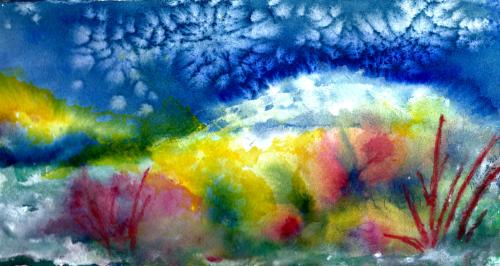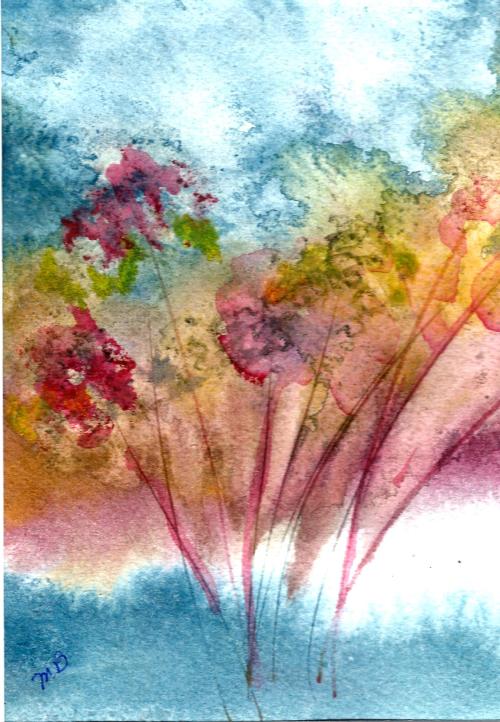
I often giggle when I think of what comes out of my studio in contrast to the work of gifted, well-schooled artists! Highly skilled artists may be among the most generously-encouraging-to-beginners group of professionals on earth. We all are included in a vastly diverse culture where there is a place for most anyone at any level and inclination.
But I have a library of art books—both “how to” tutorials by well-known artists, and tomes of art history and criticism. I love to study these books, and I do know the difference between classic art and smoke and mirrors—my off-the-cuff “hashtag” for a bag of tricks which I am delighted to share with any beginner who is eager to paint and willing to spend hours each week, building an inventory of paintings in his or her studio.
My 12″ x 16″ rendering below is titled “Between a Rock and a Hard Place”, and it is composed of tricks that my seven-year-old great-grandsons could perform if they decided to sit or stand still long enough, I began by slathering gesso on the 140# cold press paper to create rocky slopes. After the gesso dried, I sprayed the surface with water and applied different watercolors—jiggling the paper so the paints could blend and do their own thing, When those paints dried, I streaked a thinned application of white gouache here and there to add mystery and a sense of age to the rocks. Voilà. Smoke and mirrors.

The next example displays a couple of favorite tricks: plastic wrap and salt. (I use Kosher salt, but any will do—creating slightly varying effects). The paper used here is Yupo, that glass-like surface which is not really paper, but rather an amalgamation of chemicals. (There is no middle ground with Yupo. Artists either love it or hate it. The lovers are the “let it all hang out” group of which I am one, and the haters are the perfectionists who do well with lots of control.)
Where you see crinkles and wrinkles, that is where the plastic wrap was applied. It takes a long time for the paint to dry under plastic wrap on Yupo, and less time on a rag surface which is absorbent. The spots and phased-out parts were done with salt. The salt technique is far more spectacular on rag paper than on Yupo. The painting at the top of this page shows the result of salting the wet paint on rag paper. Salt can make snowflakes, clouds, stars, dandelion fluff, and many additional effects,
Thus you can see that whenever art making is a person’s dream, it can be done. And every dream will materialize differently—as each of us is unique. What fun we can have, sharing our ways to implement the smoke and mirrors! 🙂

